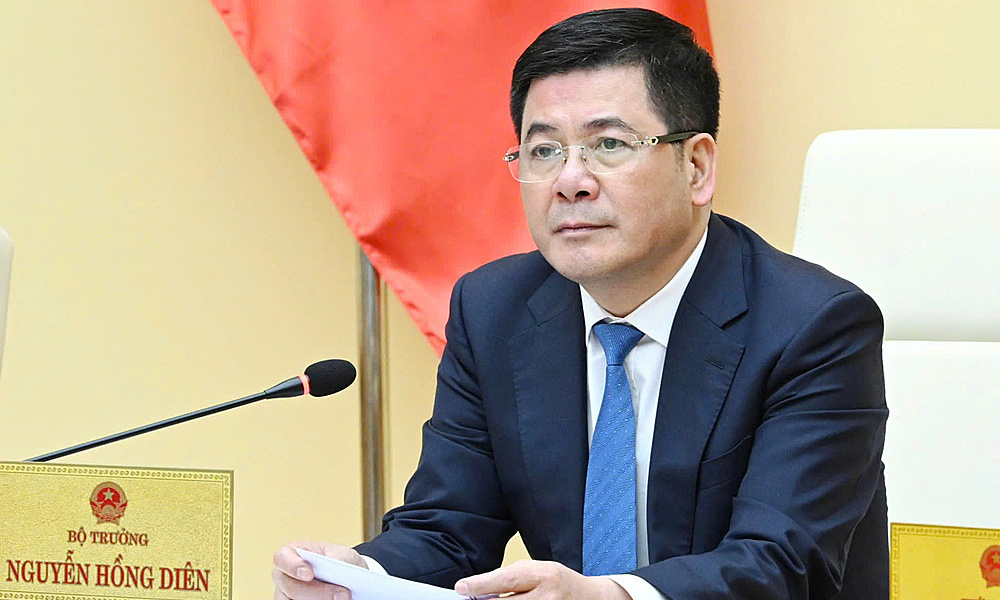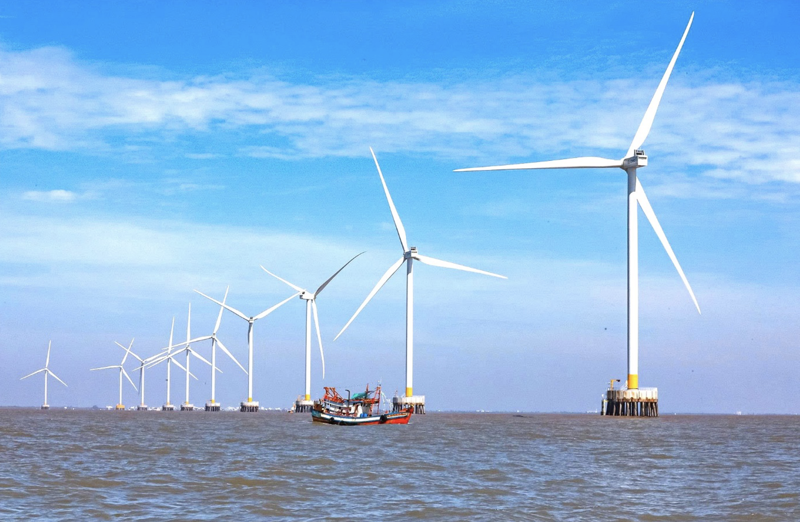At an appraisal meeting for adjustments to the National Power Development Plan VIII (Plan VIII), held on February 19, Minister of Industry and Trade Nguyen Hong Dien stated that offshore wind power remains an expensive energy source in terms of investment costs, and therefore proposed offshore wind power development to be postponed until after 2030.
According to previously approved Plan VIII, Vietnam aimed for an offshore wind power capacity of approximately 6,000 megawatts by 2030. However, no projects have been approved for investment so far.
Under adjustments to Plan VIII, it was proposed to develop offshore wind power after 2030, with target capacity set at around 17,000 megawatts by 2035.
Vietnam therefore will prioritize onshore and nearshore wind power in the next 5 year, increasing capacity to 27,791 - 34,667 megawatts—about 15 per cent higher than the capacity set in Plan VIII.
The World Bank has previously estimated Vietnam’s offshore wind potential at approximately 600 gigawatts. By 2035, offshore wind power source could supply up to 12 per cent of the country’s total electricity output.
Several foreign investors have expressed interest in developing offshore wind projects in Vietnam. The Ministry of Industry and Trade earlier stated that it has received proposals from nine major energy corporations, such as CIP (Denmark), BP and Corio (UK), and Petronas (Malaysia), among others.
Despite this, offshore wind power development in Vietnam faces several challenges, including high capital investment requirements, and others.

This year, the government has set a minimum GDP growth target at least of 8 per cent, aiming for double-digit growth between 2026 and 2030. To meet the electricity demand for economic expansion, the Ministry of Industry and Trade estimates that total power capacity will need to reach 183,291 - 236,363 megawatts by 2030, marking an 18-54 per cent increase over current projections.
In terms of coal power, total capacity is expected to increase by 928 megawatts compared to the initial Plan VIII, due to updates on existing thermal power plants.
Meanwhile, power capacity from domestic gas sources will remain unchanged at approximately 10,861 megawatts.
Some delayed LNG power projects will be postponed until after 2030, resulting in a revised LNG power capacity of 8,824 megawatts for the next five years—a reduction of approximately 13,576 megawatts from the original plan.
Meanwhile, hydropower, renewable energy, and battery storage will see an increase. The government plans to fully utilize Vietnam’s hydropower potential, increasing large and medium-sized hydropower capacity to 21,100 megawatts (a 1,600 megawatts rise) and small hydropower capacity to 13,500 megawatts (a 5,400 megawatts increase).
Solar power, both rooftop and utility-scale, will also expand significantly, with capacity rising by 25,867-52,825 megawatts to reach 46,459-73,416 megawatts. This expansion is crucial for meeting electricity demand in 2026-2027 due to the rapid deployment of solar projects.
Regarding nuclear power, the Ninh Thuan nuclear project (including 2 plants) is expected to have a total capacity of 6,000-6,400 megawatts, with completion by 2030 and commercial operation between 2030 and 2035. By 2050, an additional 4,500-5,000 megawatts of nuclear power is planned for northern Vietnam, along with approximately 3,000 megawatts in the central region, primarily using small modular reactors (SMRs). The selection of potential sites for nuclear power plants will be studied in future planning phases beyond Power Plan VIII.
The total investment required for the 2026-2030 period is estimated at $136-172 billion, with $118-148 billion allocated for power generation and $18-24 billion for transmission grids. To meet this financial demand, the Ministry of Industry and Trade has proposed diversifying funding sources, including bank loans, international aid, and capital markets. The government also aims to attract both domestic and foreign investments, encouraging broader participation in the energy sector.









 Google translate
Google translate